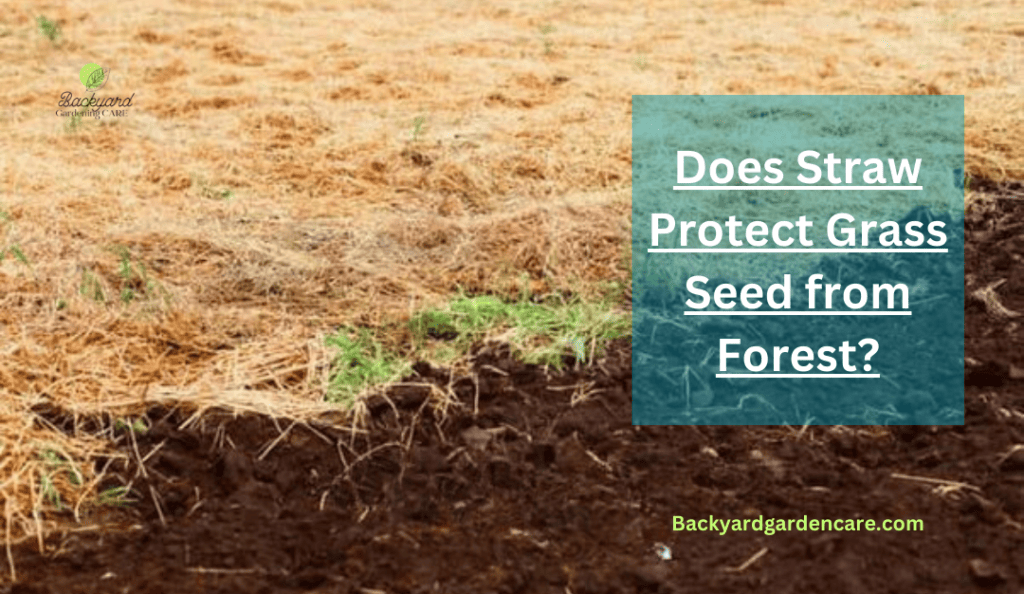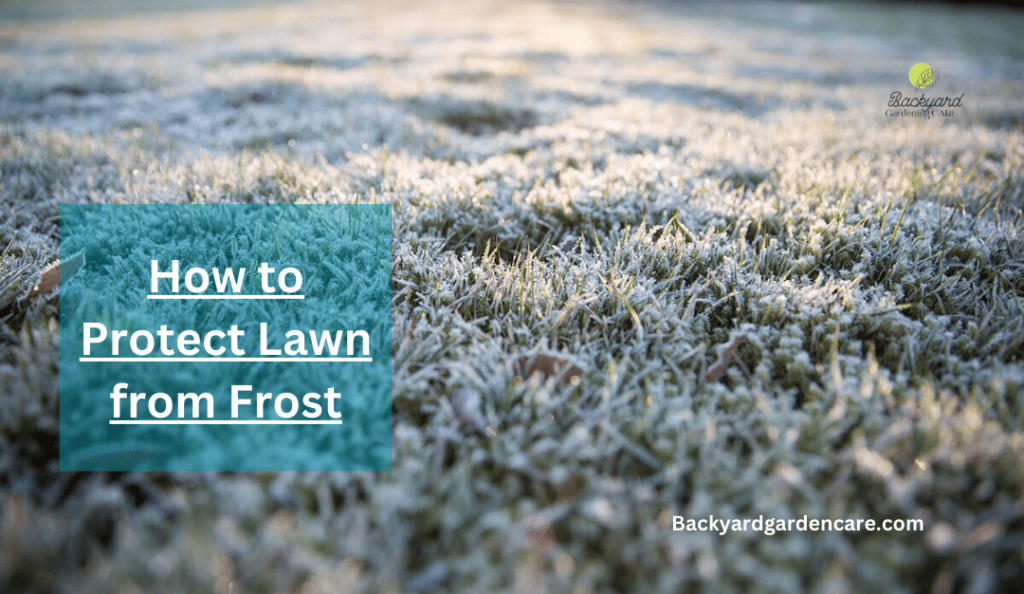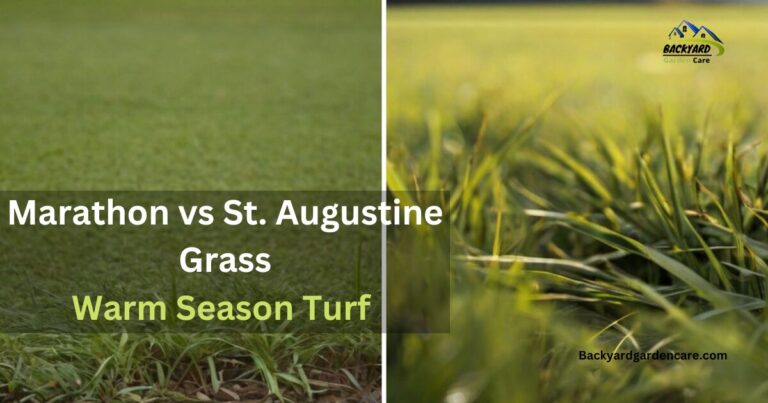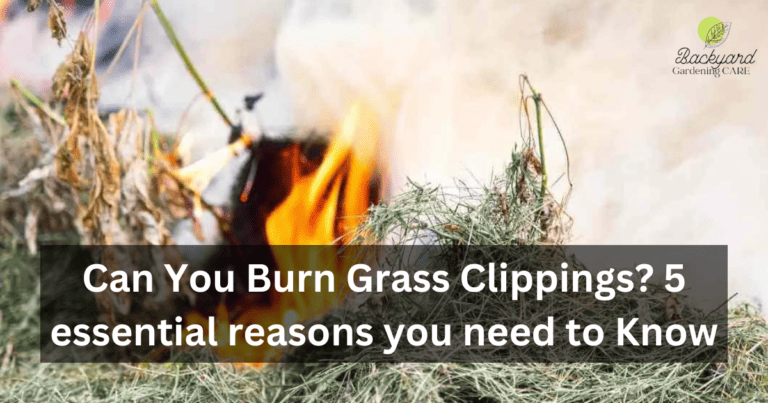Does Straw Protect Grass Seed from Frost? You Need To Know Everything About That
Do you want your grass seedlings to grow into a lush and vibrant lawn, but are you worried about the damage caused by frost? It is important to note that frost seriously threatens young and immature grass plants when the temperature drops during cool fall or winter mornings.
When seedlings are not protected from freezing temperatures and precautions are not taken, it is possible for them to lose essential water and nutrients, resulting in their eventual demise. How Much Water For Grass Seeds should be carefully considered to ensure their healthy growth. However, with a few simple steps, you can protect your grass seed from frost and ensure a successful growing season.
Nevertheless, if you apply the appropriate knowledge and take preventive measures, you can ensure that your grass seedlings survive and that your lawn thrives for many years to come.
In this guide, we will explore the harmful effects of frost on grass seedlings and provide you with practical tips to safeguard your young plants, allowing them to grow into a healthy and resilient lawn.
Let’s go to discuss does straw protect Grass Seed from Frost.

Does Straw Protect Grass Seed from Frost? The Benefits and Best Methods.
When winter comes, many gardeners wonder how to protect grass seeds from frost. One common solution is using straw as a protective cover, but does straw protect grass seed from frost? The short answer is yes; straw can protect grass seeds from frost.
When used as a cover, straw can help to insulate the soil and keep it warmer, which can help to protect newly sown grass seed from freezing temperatures. Also, straw can help retain moisture in the soil, which is important for growth. Additionally, it serves as a barrier to Keep Away Birds Eating Grass Seed, ensuring the seeds are undisturbed.
However, it’s important to note that straw is not a foolproof solution. If temperatures drop too low, even the best insulation may not be enough to protect your grass seed from frost damage.
Additionally, using too much straw can create a barrier that prevents air and water from reaching the soil, which can actually prevent the growing process. So how can you use straw effectively to protect your grass seed from frost?
Here are a few tips to keep in mind.
- 1Selecting the Right Straw: Choosing the best quality straw is crucial for effective frost protection. Opt for clean, dry, and free straw from weed seeds.
- Wheat straw and oat straw are commonly used for this purpose due to their availability and suitability for garden applications. Avoid straw with excessive moisture, as it can promote fungal growth and hinder seedling development.
- 2. Use a light layer of straw. A thin layer of straw is all you need to provide some insulation without suffocating the soil.
- 3. Don’t use straws too early. Wait until after the first frost to lay down your straw. If you put it down too early, you may actually encourage fungal growth or attract rodents.
- 4. Remove the straw once the grass starts to grow. Once your grass seed has germinated and started growing, remove the straw so the new grass can get the air and sunlight it needs to thrive.
By following these tips, you can use straw effectively to give your grass seed the best chance of survival during winter.
What Temperature Kills Grass Seed?
I’ve learned that temperature plays a crucial role in the success of grass seed germination. Grass seeds are particularly sensitive to extreme temperatures, and their viability can be severely compromised. Generally, grass seeds require a soil temperature between 50°F and 65°F to germinate effectively.
Temperatures significantly below this range can slow down or halt the germination process altogether. During a particularly harsh winter, I made the mistake of overseeding my lawn in late fall, just as the temperatures started to plummet.
The cold snap that followed prevented most of the grass seeds from sprouting, leaving my lawn patchy and bare in some areas. It was a valuable lesson that emphasized the importance of timing and temperature control in lawn care and seed planting.
The Dormant of Grass Seedlings.

Contrary to being killed, grass seedlings have the ability to enter a state of dormancy when exposed to unfavorable temperature conditions.
A seedling that is in dormancy means that during this period, the seedling’s growth halts, allowing it to conserve energy while also being able to withstand challenging environmental conditions for a short period of time.
Critical temperature: Will frost kill grass seedlings?
It is generally assumed that grass seed dies or remains dormant if the temperature falls below 40 degrees Fahrenheit (4 degrees Celsius).
The seed’s metabolic processes slow down at temperatures below this threshold, and germination becomes unlikely. However, it’s important to note that the seed remains viable and can resume growth once the temperature rises.
Optimal Temperature for Seed Germination and Growth.
The grass seed needs to be grown between 50 and 70 degrees Fahrenheit (10 to 21 degrees Celsius) to facilitate germination and vigorous growth. Within this range, the seed can sprout and develop into healthy seedlings.
It is important that sufficient soil moisture is present, along with a favourable temperature range, to enhance the germination process even more.
Fall Frosting and Seedling Dormancy.
The second fall frost can pose a significant threat to young grass seedlings. This critical period can cause the seedlings to enter a state of dormancy and halt their growth.
As the temperatures plummet, the seedlings conserve energy and remain inactive beneath the soil. It’s crucial to keep in mind that this dormancy is temporary, and the seedlings can resume growth once the conditions become favorable again.
Therefore, it’s essential to take necessary measures to protect the seedlings from the harsh frost and facilitate their growth through the dormant phase.
Overcoming Temperature Challenges.
To ensure successful grass seed germination and growth, consider the following measures.
- Timing: Ensure that your seeding activities coincide with the ideal germination temperature range. The best time to sow is usually in the spring or early fall when moderate temperatures exist.
- Temperature monitoring: Make sure you keep an eye on weather forecasts and temperature trends. Understanding What Temperature Kills Grass Seed is crucial for successful seeding. Seeding at an appropriate time and anticipating extreme temperatures will be easier if you have this information.
- Supplementary measures: Straw covers and frost sheets can be used to create a more comfortable microclimate for seedlings in regions where temperature fluctuations are common.
Moreover, grass seedlings are not typically killed by temperature fluctuations; extreme cold can induce dormancy, temporarily halting their growth. Understanding the critical temperature ranges for seed viability and germination is crucial for successful lawn establishment.
How to Protect Grass Seed from Frost?

As the seasons change and the weather gets colder, protecting your grass seed from frost is essential for ensuring a healthy and lush lawn come springtime.
Frost can damage and even will frost kill ryegrass seed, leaving your lawn patchy and uneven. However, with a few simple steps, you can protect your grass seed from frost and ensure a successful growing season.
1. Choose the right time to plant: The timing of planting is crucial when it comes to protecting grass seedlings from frost. It is advisable to plant the seedlings in spring or fall when the soil is warm, and the chances of frost are minimal. Avoid planting in winter when temperatures are low, and frost is common.
2. Cover the seedlings: One of the easiest ways to protect grass seedlings from frost is to cover them with a frost cloth or blanket. These materials help to trap warm air, which prevents the seedlings from freezing.
Cover the seedlings in the evening before the frost sets in, and remove the cover in the morning when the temperatures rise.
With this easy method, grass seedlings will stay healthy and strong, even during frosty weather conditions.
3. Water the seedlings: Watering them before the frost sets in can help insulate them and prevent damage. Wet soil retains heat better than dry soil, which helps to keep the seedlings warm.
Water it in the evening to allow the moisture to penetrate the soil and form a protective barrier against frost overnight. However, avoid overwatering the seedlings as this can lead to other problems, such as root rot.
4. Avoid walking on your lawn: Walking or driving on frozen grass is extremely dangerous. Severe damage may result if frozen water molecules rupture plant cell walls due to strain exerted on iced grass. To protect your young grass, avoid walking or allowing pets or animals on the lawn until the frost has melted and the grass has had a chance to recover.
5. Mulch around the seedlings: Mulching around the seedlings can help to insulate them from the cold and prevent frost damage. Organic mulch such as straw, leaves, or grass clippings can help to trap heat and keep the soil warm. Apply a layer of Black mulch around the seedlings, but avoid covering the seedlings.
6. Choose cold-tolerant grass species: When choosing grass seedlings, select cold-tolerant species that can withstand frost and cold temperatures.
Protecting grass seedlings from frost requires proper planning, timing, and care. Following the above steps ensures that your grass seedlings grow strong and healthy, even in cold and frosty conditions.
Final Thoughts
using straw as a protective covering for grass seed during frosty conditions can be a useful technique to help maintain the warmth and moisture levels required for successful germination.
However, it is important to note that straw alone may not be enough to protect the grass seed from severe frost damage, and additional measures, such as using frost sheets or delaying planting until after the frost period, may be necessary for colder climates.
Overall, carefully considering the local weather conditions and appropriate protective measures can help ensure the best possible outcome for a successful grass seed planting.
FAQs about Does Straw Protect Grass Seed from Frost?
Should You Cover Grass Seed with a Straw?
Yes, it is recommended to cover grass seed with straw. This helps to protect the seed from being washed away by heavy rain, Frost, or blown away by the wind.
The straw also helps retain moisture, which is important for germination. However, using straw-free of weed seeds is important, as these can compete with the grass and slow its growth.
How Do I Protect My Grass Seedlings from Frost?
You can take several steps to protect your grass seedlings from frost. Cover your grass seedlings with a layer of straw, hay, or mulch to insulate the soil and protect the seedlings from freezing temperatures.
Water your grass seedlings regularly, as moist soil retains heat better than dry soil. Finally, consider using frost sheets or cloths to cover your grass seedlings during particularly cold nights. With these steps, grass seedlings should be well-protected from frost and thrive.
Can You Leave Straw on New Grass Over Winter?
You can leave straw on new grass over winter to protect it from harsh weather conditions and prevent soil erosion. The straw is a natural insulation layer that helps maintain soil moisture and temperature.
However, it’s important to make sure that the straw is spread evenly and not too thick, as it can smother the grass and prevent it from getting adequate sunlight and air.
Should I Water the Grass Seed if It’s Cold?
You should still water the grass seed even if it’s cold. While the colder temperatures may slow the germination process, the seed still needs moisture to grow. It’s important to maintain a consistent moisture level in the soil but not let it become waterlogged. Adjust your watering schedule according to the soil moisture.
Will Grass Seed Germinate After a Frost?
Yes, grass seeds can still germinate after a frost. However, the extent to which the frost has damaged the soil and the seeds can affect the germination rate and success. I
t is best to wait until the soil temperature is consistently above 50°F (10°C) before planting grass seed to ensure optimal germination and growth. Additionally, using a high-quality seed and properly preparing the soil can increase the chances of successful germination.
Jack Ralph

hey, I’m Jack Ralph, a dedicated grass and lawn expert with years of experience creating beautiful outdoor spaces. I can help you achieve the lawn of your dreams, from seeding to mowing, turning your yard into a natural masterpiece.
Look no further—I’m the key to transforming your lawn dreams into reality! and here to help you achieve a lawn that’s not just a patch of grass, but a canvas of natural artistry.







